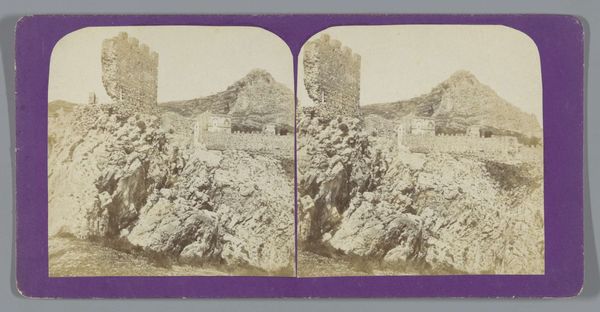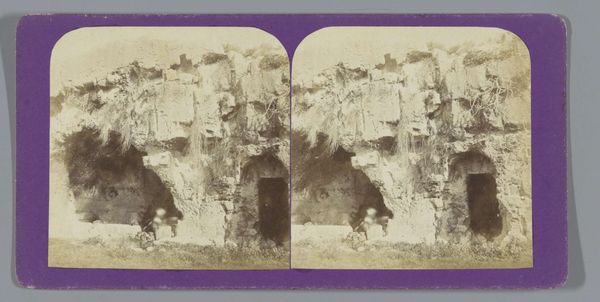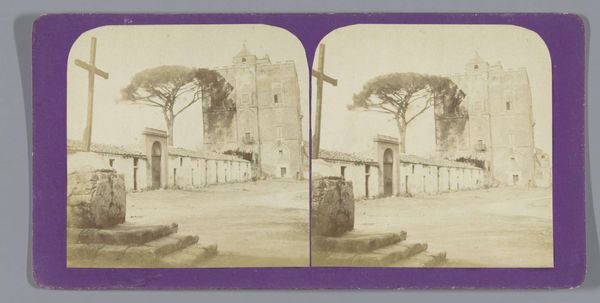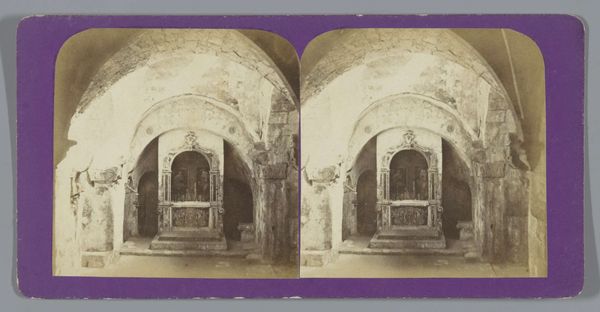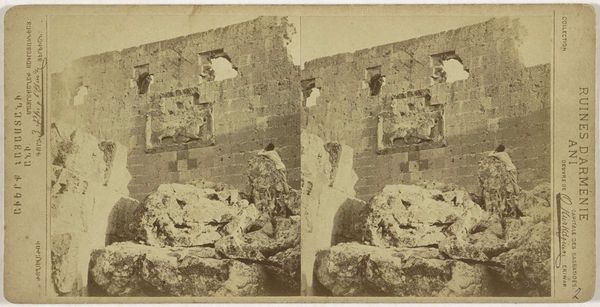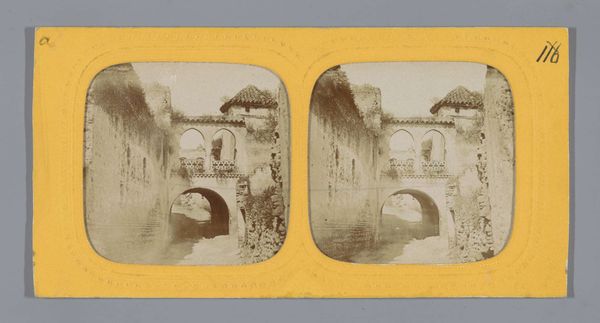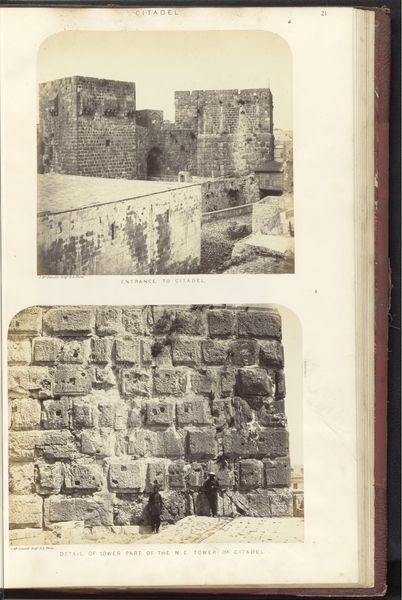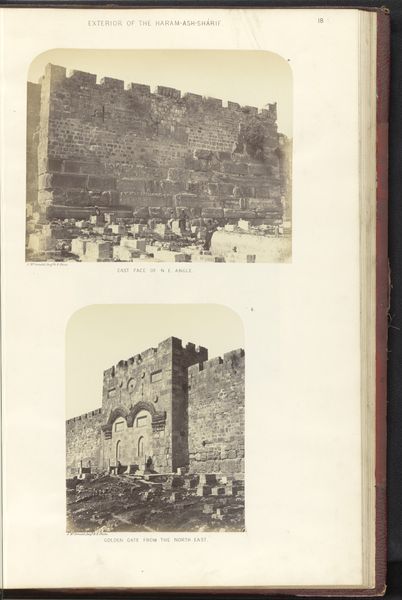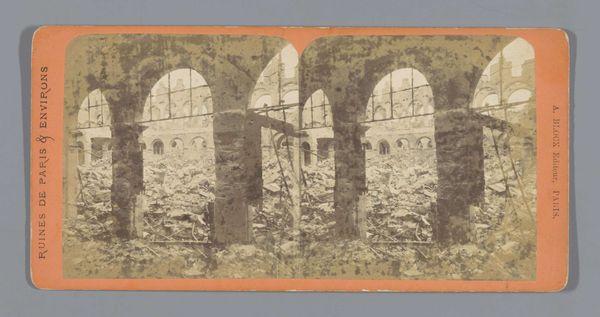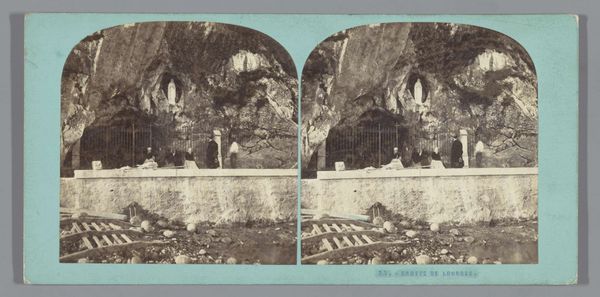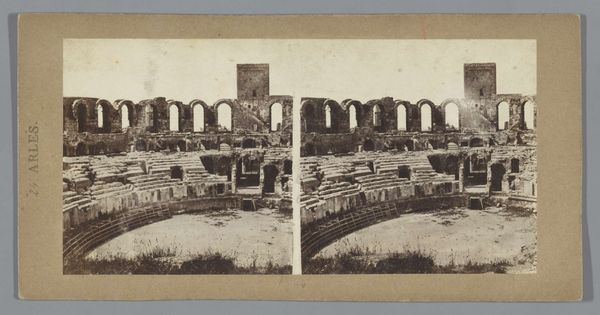
print, photography, site-specific, gelatin-silver-print
# print
#
landscape
#
photography
#
coloured pencil
#
ancient-mediterranean
#
site-specific
#
gelatin-silver-print
#
cityscape
Dimensions: height 88 mm, width 176 mm
Copyright: Rijks Museum: Open Domain
Curator: Before us we have "Gezicht op de Chiesa di San Giovannello te Syracuse," a gelatin-silver print from sometime between 1862 and 1876 by Jean Andrieu. Editor: My first thought is, it feels incredibly haunted. The ruin, the sepia tones, the very starkness of the composition... it whispers of forgotten histories. Curator: Andrieu’s work is fascinating because it captured architectural sites, and by extension, the urban and social environment undergoing rapid change. The Chiesa di San Giovannello itself speaks to centuries of Sicilian history, originally Norman from the 12th Century, subsequently going through multiple collapses and rebirths. Photographs like this, sold as tourist souvenirs, began to play a pivotal role in defining the "look" of antiquity, as a relic, frozen in time. Editor: Absolutely. Churches often represent not just spiritual havens, but power structures. A ruined church becomes a potent symbol, questioning former certainties. The rose window, though crumbling, still draws the eye, evoking cyclical ideas of death and rebirth. Does that circularity resonate, hinting at an ongoing, perhaps, unbreakable belief, in a time of great turbulence in European societies? Curator: Interesting point! In a period when religious and political landscapes were being redefined, an image like this, presented as a memento for the burgeoning tourist industry, helped establish a kind of shared cultural narrative about Europe’s antique past, perhaps creating a feeling of continuity or justification. But what's fascinating to me is how photography itself contributed to these cultural shifts, enabling wider consumption. Editor: Yes, the photographic medium is crucial here, immortalizing a specific state of decay. Think of the associations of sepia tones—aged documents, nostalgia...it encourages us to interpret the ruin as something ancient, almost mythical, as it is being disseminated. Curator: It underscores how art became a powerful tool for constructing and negotiating social and political meanings in this period. What looks like a simple souvenir, becomes a very influential form of public image making. Editor: Indeed. It is about power and perception: who controls the image, controls the narrative, and the lasting symbols. Thank you for bringing this nuanced viewpoint to this, for what appeared initially, to be a straightforward photograph.
Comments
No comments
Be the first to comment and join the conversation on the ultimate creative platform.
